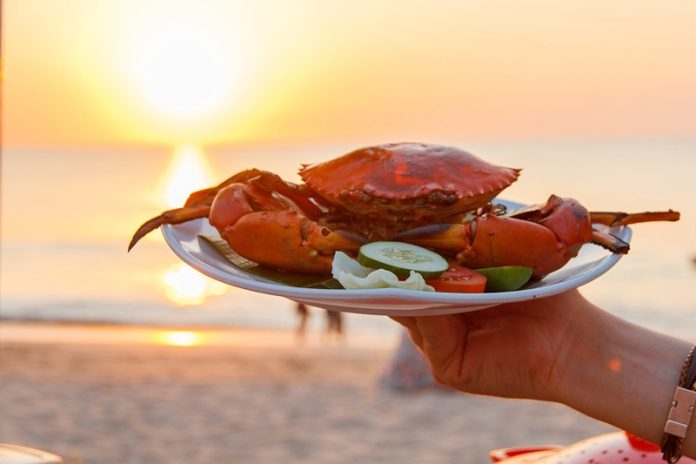Key Takeaways:
- Get the best out of your crab dining experience with practical tips and etiquette.
- Learn how to choose the right type of crab and restaurant for an enjoyable meal.
- Understand the health benefits and environmental impacts of crab consumption.
- Discover the social and cultural aspects that make eating crab a unique experience.
Table of Contents:
- Introduction
- Choosing the Right Restaurant
- Picking the Right Crab
- Tools and Techniques for Eating Crab
- Crab Eating Etiquette
- Pairing Sides and Sauces
- Health and Nutrition of Crab
- Sustainability Concerns
- The Cultural Experience of Crab Dining
- Making Memories While Enjoying Crab
- Summary
Introduction
Going out to the best crab restaurant in San Francisco should be an experience beyond filling your stomach; it’s about enjoying the food, the ambiance, and the company. This is especially true when the main dish is crab. Crabs are a delicacy, and a certain satisfaction comes with cracking open the shells to reveal the succulent meat inside. But for some, the prospect of eating crab at a restaurant can seem daunting. Fear not – here, we crack the code with tips on enjoying crab the right way in a restaurant.

Choosing the Right Restaurant
Before you even think about cracking a shell, finding a restaurant that knows its crab is important. Look for places that emphasize the freshness of their seafood and have a variety of crab dishes on the menu. A restaurant that specializes in seafood will likely understand how to cook and present crab properly. Read reviews, ask for recommendations, and don’t be afraid to ask the restaurant where they source their seafood from – a restaurant worth its salt will be proud to share this information.
Picking the Right Crab
There are many kinds of crab, each with its own characteristics and flavors. Blue crabs are small but flavorful, king crabs have sweet and tender legs, and Dungeness crabs offer a good balance between size and taste. If you need help deciding which type to choose, ask your server for advice based on your taste preferences.
Tools and Techniques for Eating Crab
Eating crab can be messy, but that’s part of the fun. Most restaurants will provide the necessary tools – a crab cracker and a small fork – and a bib to protect your clothes. Start by removing the legs and claws and using the cracker to break the shells. Remove the gills and apron for the body, and then open the shell to access the meat. Use the small fork to pick out the meat from the crevices. Take your time and enjoy – eating crab is not a race.
Crab Eating Etiquette
While eating crab can be a hands-on, informal affair, there’s still a certain etiquette to observe. Using your hands is fine, but use the tools provided as needed to minimize flying pieces of shell. Keep your workspace tidy, use the extra bowls or plates provided for discarded shells, and wipe your hands regularly with the wet towelettes or lemon water often provided by the restaurant.
Pairing Sides and Sauces
A crab’s sweet meat is delightful, but the right sides and sauces can elevate the dish even more. Drawn butter is a classic choice, while others may prefer the tangy notes of a cocktail sauce or the zip of a mustard sauce. As for sides, corn on the cob, coleslaw, or a fresh salad can complement the flavors well. Ask what’s traditional or recommended with the type of crab you’re ordering.
Health and Nutrition of Crab
Crab is not only delicious – it’s also good for you. It’s high in protein and omega-3 fatty acids, low in calories, and contains vital vitamins and minerals. From a nutritional standpoint, it’s an indulgence you can feel good about. As with anything, moderation is key, especially if you’re watching your cholesterol intake, as crab is naturally high in this substance.
Sustainability Concerns
As demand for seafood grows, choosing restaurants that source their crab sustainably is increasingly important. Overharvesting and destructive fishing methods can harm crab populations and their habitats. Look for certifications like the Marine Stewardship Council (MSC) or ask the restaurant about their sourcing practices to ensure that your crab dinner is as environmentally responsible as it is enjoyable.
The Cultural Experience of Crab Dining
Crab dining is more than a meal; it’s an opportunity to partake in a tradition observed by various cultures worldwide. In some regions, eating crab is a social event, complete with specific rituals and methods passed down through the generations. Take this chance to learn about these traditions and appreciate the cultural significance of your meal.
Making Memories While Enjoying Crab
Eating crab can create lasting memories, especially if it’s a new experience. Whether dining out for a special occasion or just having a casual meal, enjoying crab can be a memorable and fun activity that stands out. Every cracked shell and morsel of meat tells a story of discovery and pleasure.
Summary
Ultimately, enjoying crab in a restaurant depends on preference, practice, and patience. Don’t shy away from the experience due to the potential mess or the necessity of some technique. With these tips in mind, you’re ready to take on the challenge and revel in the delectable world of crab dining. So grab your cracker, tie on your bib, and get ready to dig into one of the ocean’s finest offerings.
This article covers various aspects of enjoying crab in a restaurant setting. It is designed to provide informative and helpful content for someone looking to enhance their crab dining experience without feeling overwhelmed. If you need further details or modifications, please let me know.







